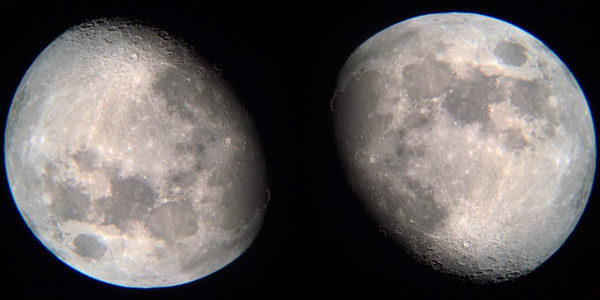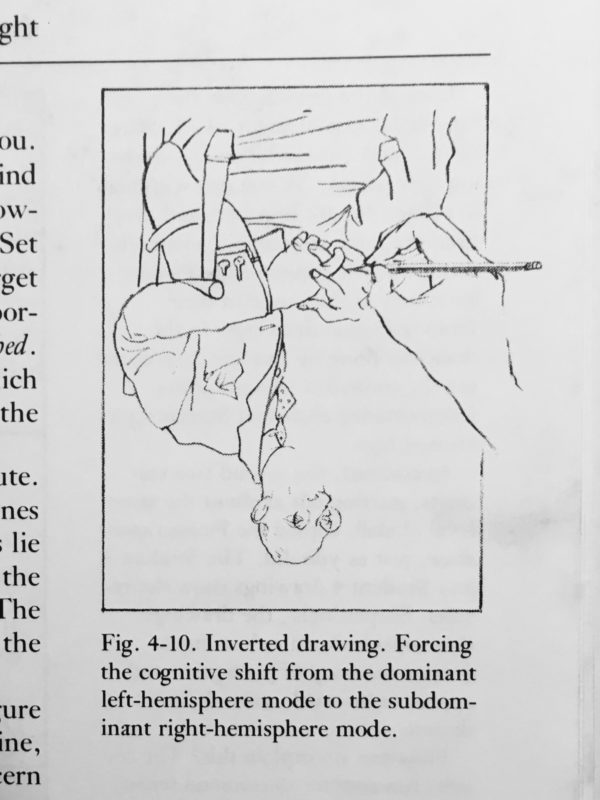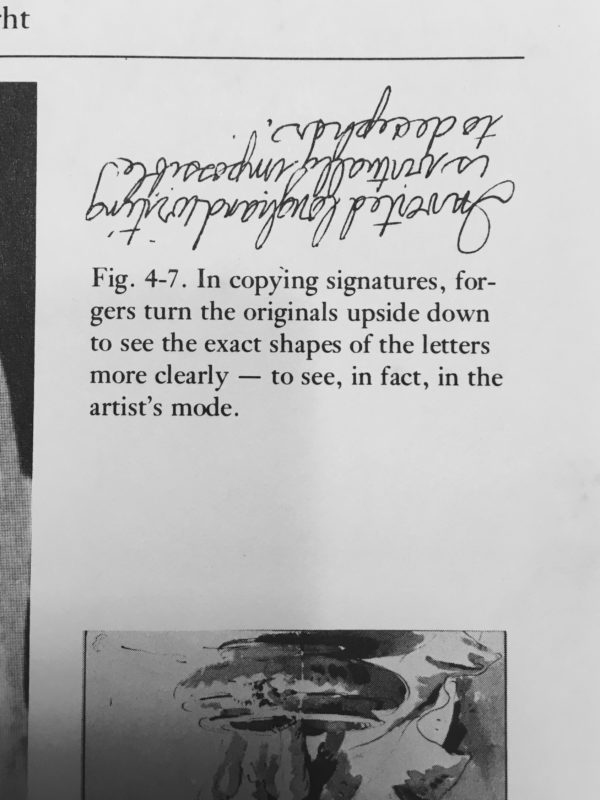A reader wrote in to tell me my pictures of the moon through my new telescope were beautiful and all, but the moon was upside down. Indeed! When you look through a Dobsonian telescope the image you see is upside down because the mirror in the bottom is curved, as is explained in this video, with a kitchen spoon, some sticks, and a piece of foam:
I didn’t bother altering the image of the moon in the post, because I wanted to show it as it looked through my viewfinder.
I’m reminded of Betty Edwards’ book, Drawing on the Right Side of the Brain, which includes an exercise that asks the drawer to draw something upside down:
Familiar things do not look the same upside down. We automatically assign a top, bottom, and sides to the things we perceive, and we expect to see things oriented in the usual way – that is, the right side up. For, in upright orientation, we can recognize familiar things, name them, and categorize them by matching what we see with our stored memories and concepts.
When an image is upside down, the visual cues don’t match. The message is strange, and the brain becomes confused.
What you do, when you turn something upside down, is make it strange — when your brain doesn’t know exactly what it is that you’re looking at, you start to really look at the thing and see it with “fresh” eyes.
This, by the way, is exactly what a camera obscura does. Here’s photographer Abelardo Morell demonstrating his technique:
(A fabulous read on art and optics is David Hockney’s Secret Knowledge.)
As Paul Valéry put it (paraphrased for the title of Weschler’s book on artist Robert Irwin): “To see is to forget the name of the thing one sees.”


